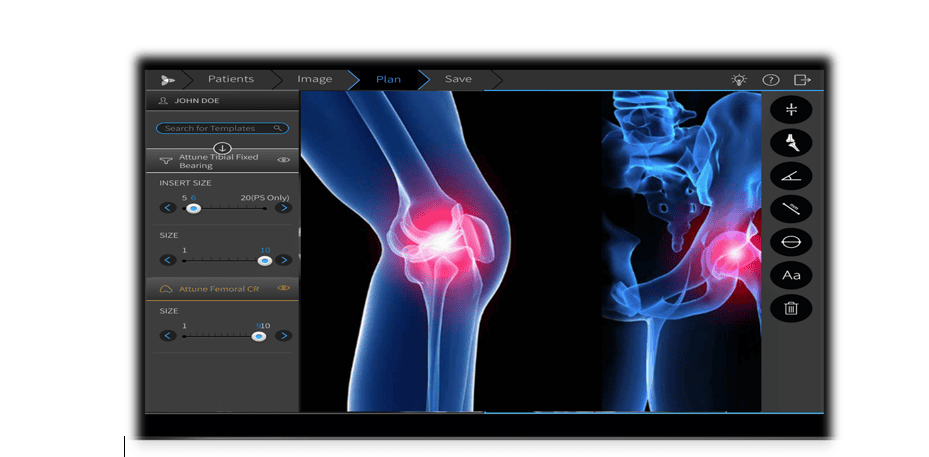
预计骨科软件市场在 2021-2027 年预测期内的复合年增长率约为 7%。2020 年,市场规模约为 XX 亿美元。过去几年,全球骨科市场经历了可观的增长。随着生活方式的快速变化,包括肥胖症在内的疾病的患病率不断上升,这反过来又推动了骨科问题的发生率。如果手动完成骨科问题的治疗过程,不仅耗时,而且还会增加出错的可能性。在骨科专科诊所、医院和外科中心部署骨科软件可以轻松克服这个问题。骨科软件允许外科医生或医生通过有效地节省时间来增强与治疗程序和临床数据相关的信息管理方式。因此,由于花费大量时间来维护关键的患者信息并将患者的该信息与其他医生协调,因此对骨科软件的需求正在急剧上升。患有关节炎的人口激增以及老年人口的增加预计将推动全球骨科软件市场的发展。
如需详细分析市场驱动因素,请浏览 https://univdatos.com/report/orthopedic-software-market/
总体而言,骨科软件行业预计将出现强劲的长期需求,这主要是由于骨科设备的持续技术进步以及对采用医疗保健 IT 技术以优化工作流程的需求激增。此外,由于人们越来越倾向于保护疾病的传播并为此分配资源,COVID-19 疫情的爆发对市场增长产生了一定的负面影响。
按应用划分,市场分为关节置换、骨折治疗和小儿评估。在这三个方面中,关节置换占据了骨科软件市场最大的份额。膝关节置换术是全球最常见和最有效的手术之一。骨关节炎会导致功能下降和生活质量下降,是进行关节置换手术的最常见原因。由于慢性病的发病率不断上升,这增加了关节手术的次数和翻修手术的次数,因此骨科软件的采用量显着增加。
此外,预计骨折治疗在预测期内的增长最快。骨折治疗计划软件允许外科医生通过提供大型假体模板库和直观的特定于程序工具来有效地计划每个程序,并避免手术中可能出现的并发症。
如需详细分析细分市场,请浏览https://univdatos.com/get-a-free-sample-form-php/?product_id=19376
按最终用户划分,市场分为医院、独立骨科诊所、外科中心和其他。在这些细分市场中,骨科软件在医院中的需求量很大,因为它为骨科医生提供了先进的工具,可以改善复杂病例的可视化效果、提高医疗效率、减少时间和医疗保健成本、改善数据管理以及许多其他好处。除此之外,各国医疗机构数量的增加以及医院对研发投资的激增导致了骨科软件市场的增长。此外,各国政府正在对医疗保健行业进行投资,以实现进步和技术升级。此外,由于在一个地方可以轻松获得大多数医疗保健服务,医院的患者就诊量增加可能会促进该细分市场的增长。
如需索取报告样本,请浏览https://univdatos.com/get-a-free-sample-form-php/?product_id=19376
为了更好地了解市场,该报告根据不同的地区进行分析,包括北美(美国、加拿大、北美其他地区);欧洲(德国、英国、法国、意大利、欧洲其他地区);亚太地区(中国、日本、印度、澳大利亚、韩国、亚太其他地区);以及世界其他地区。北美在全球骨科软件市场中占据主导地位。该地区市场增长的主要因素是美国和加拿大等国家越来越多地采用先进技术和软件。除此之外,老年人口的增加以及与膝盖和髋部相关问题的激增也导致了对骨科软件需求的增加。此外,骨科 EHR 和数据共享的日益普及不断推动着区域需求。
此外,由于医疗保健 IT 的渗透率不断提高,并且中国和印度等发展中国家的消费者意识不断增强,预计亚太地区在预测期内将实现最快的增长。与此同时,骨科和运动相关损伤的增加预计将进一步促进市场增长。
骨科软件市场细分
按产品划分的市场洞察
- 术前计划和模板软件
- 骨科电子健康记录 (EHR)
- 骨科实践管理
- 骨科图片存档和通信系统 (PACS)
- 骨科收入周期管理
按应用划分的市场洞察
- 关节置换
- 骨折治疗
- 小儿评估
按交付模式划分的市场洞察
- 基于云
- 基于 Web
- 本地
按最终用户划分的市场洞察
- 医院
- 独立骨科诊所
- 外科中心
- 其他
按地区划分的市场洞察
- 北美
- 美国
- 加拿大
- 北美其他地区
- 欧洲
- 德国
- 英国
- 法国
- 意大利
- 欧洲其他地区
- 亚太地区
- 中国
- 日本
- 印度
- 澳大利亚
- 韩国
- 亚太其他地区
- 世界其他地区
顶级公司简介
- Materialise NV
- Brainlab AG
- Medstrat, Inc.
- CureMD Healthcare
- Greenway Health
- NextGen Healthcare LLC
- McKesson Corporation
- GE Healthcare
- Philips Healthcare
- Merge Healthcare Incorporated
获取回电
